Results
-
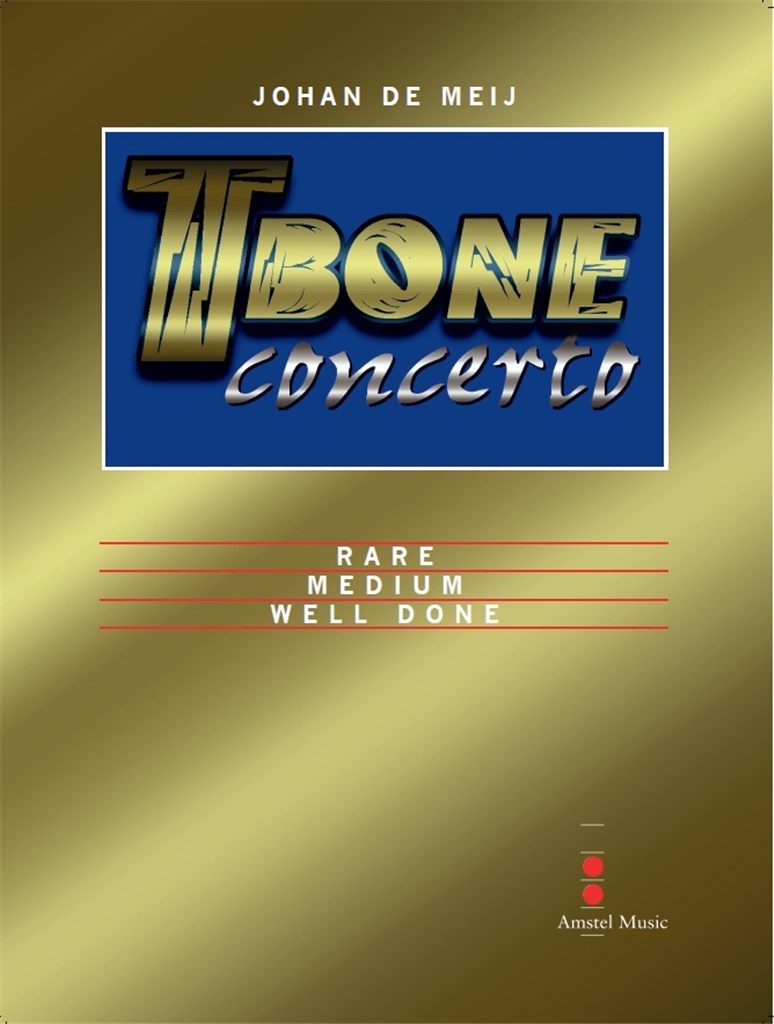 £344.00
£344.00T-Bone Concerto (Trombone Solo with Concert Band - Score and Parts) - De Meij, Johan
The T-Bone Concerto was Johan de Meij's first composition for solo instrument and symphonic band. It consists of three movements called respectively 'Rare', 'Medium' and 'Well Done'. In addition to the solo trombone, an important role has been allotted to a kind of chamber music ensemble within the band. This group introduces new thematic material and accompanies the soloist, thus creating a delightful transparant accompaniment. The ensemble consists of a double wind quintet (2 flutes, 2 oboes, 2 clarinets, 2 french horns and 2 bassoons) plus a cor anglais and a double bass. Parts I and II are written in the A-B-A form and allow the soloist to display both the technical and the lyrical characteristics of the instrument. Part III at first develops into a kind of neo-baroque style using the thematic material of the first and second movement, and finally leads to a triumphant finale and a virtuoso conclusion. Duration: 25.00
Estimated dispatch 7-14 working days
-
 £111.00
£111.00Well Done (Movement III from T-Bone Concerto) (Trombone Solo with Concert Band - Score and Parts) - De Meij, Johan
The T-Bone Concerto was Johan de Meij's first composition for solo instrument and symphonic band. It consists of three movements called respectively 'Rare', 'Medium' and 'Well Done'. In addition to the solo trombone, an important role has been allotted to a kind of chamber music ensemble within the band. This group introduces new thematic material and accompanies the soloist, thus creating a delightful transparant accompaniment. The ensemble consists of a double wind quintet (2 flutes, 2 oboes, 2 clarinets, 2 french horns and 2 bassoons) plus a cor anglais and a double bass. Parts I and II are written in the A-B-A form and allow the soloist to display both the technical and the lyrical characteristics of the instrument. Part III at first develops into a kind of neo-baroque style using the thematic material of the first and second movement, and finally leads to a triumphant finale and a virtuoso conclusion. Duration: 6.15
Estimated dispatch 7-14 working days
-
 £111.00
£111.00Medium (Movement II from T-Bone Concerto) (Trombone Solo with Concert Band - Score and Parts) - De Meij, Johan
The T-Bone Concerto was Johan de Meij's first composition for solo instrument and symphonic band. It consists of three movements called respectively 'Rare', 'Medium' and 'Well Done'. In addition to the solo trombone, an important role has been allotted to a kind of chamber music ensemble within the band. This group introduces new thematic material and accompanies the soloist, thus creating a delightful transparant accompaniment. The ensemble consists of a double wind quintet (2 flutes, 2 oboes, 2 clarinets, 2 french horns and 2 bassoons) plus a cor anglais and a double bass. Parts I and II are written in the A-B-A form and allow the soloist to display both the technical and the lyrical characteristics of the instrument. Part III at first develops into a kind of neo-baroque style using the thematic material of the first and second movement, and finally leads to a triumphant finale and a virtuoso conclusion. Duration: 8.30
Estimated dispatch 7-14 working days
-
 £111.00
£111.00Rare (Movement I from T-Bone Concerto) (Trombone Solo with Concert Band - Score and Parts) - De Meij, Johan
The T-Bone Concerto was Johan de Meij's first composition for solo instrument and symphonic band. It consists of three movements called respectively 'Rare', 'Medium' and 'Well Done'. In addition to the solo trombone, an important role has been allotted to a kind of chamber music ensemble within the band. This group introduces new thematic material and accompanies the soloist, thus creating a delightful transparant accompaniment. The ensemble consists of a double wind quintet (2 flutes, 2 oboes, 2 clarinets, 2 french horns and 2 bassoons) plus a cor anglais and a double bass. Parts I and II are written in the A-B-A form and allow the soloist to display both the technical and the lyrical characteristics of the instrument. Part III at first develops into a kind of neo-baroque style using the thematic material of the first and second movement, and finally leads to a triumphant finale and a virtuoso conclusion. Duration: 10.30
Estimated dispatch 7-14 working days
-
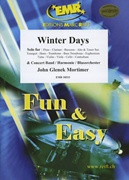 £100.00
£100.00WINTER DAYS (Flexible Solo/Easy Concert Band) - Mortimer, John Glenesk - Sedlak, Jan
A lyrical piece. Solo part provided for: Flute; Clarinet; Bassoon; Alto & Tenor Sax; Trumpet; Horn; Trombone; Bass Trombone; Euphonium; Tuba; Violin; Viola; Cello; Contrabass. American Grade 2+ Duration: 2:34
Estimated dispatch 7-14 working days
-
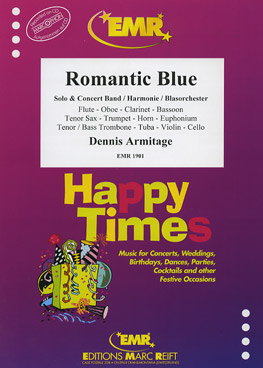 £97.40
£97.40ROMANTIC BLUE (Flexible Solo with Intermediate Concert Band) - Armitage, Dennis
Solo for Flute, Oboe, Clarinet, Basson, Tenor Sax, Trumpet, Horn, Tenor/Bass Trombone, Euphonium, Tuba, Violin or Cello. Duration: 4:45
Estimated dispatch 7-14 working days
-
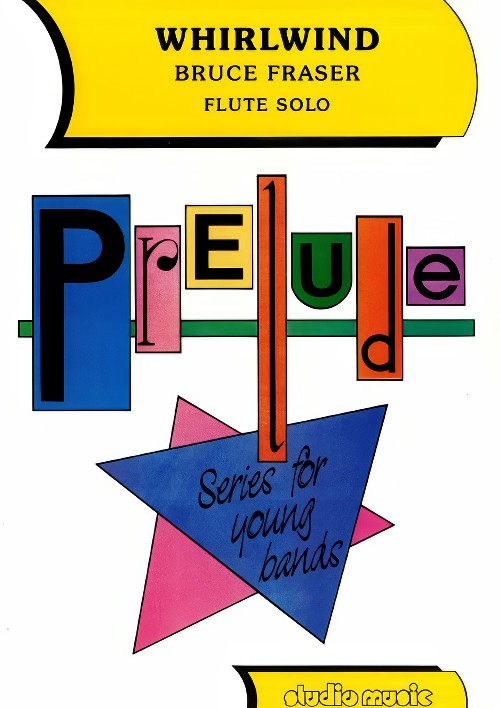 £44.95
£44.95Whirlwind (Flute Solo with Concert Band - Score and Parts) - Fraser, Bruce
Whirlwind is a flute solo and (despite the title!) it will be found that a steady waltz tempo works best. Obviously, it is important that the accompaniment remains delicate and that dynamics are adhered to.Titles in the Prelude Series are specifically scored for bands with few, if any, bass instruments but will sound well on larger ensembles. The bass line is playable by any combination of bass clarinet, bassoon, baritone saxophone, trombone, euphonium or tuba; in the event that none of these is available, the part for trombone/euphonium (B flat TC) can be played by tenor saxophone. The tuned percussion part is entirely optional and can be played by any available instrument(s). Each piece also includes a preliminary exercise. This is always in the same key as the accompanying piece and consists of a scale and chord progression that can be used for improving ensemble, balance, intonation and instrumental facility by changing tempo, articulation and dynamics.Duration: 1.30
Estimated dispatch 7-14 working days
-
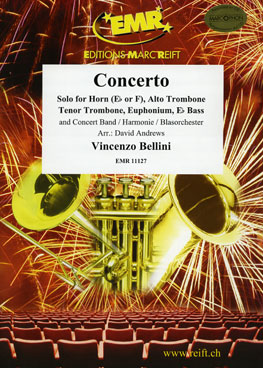 £134.00
£134.00CONCERTO (Solo with Advanced Concert Band) - Bellini, Vincenzo - Andrews, David
Solo for Horn (Eb or F), Alto Trombone, Tenor Trombone, Euphonium or Eb Bass. Duration: 7:20
Estimated dispatch 7-14 working days
-
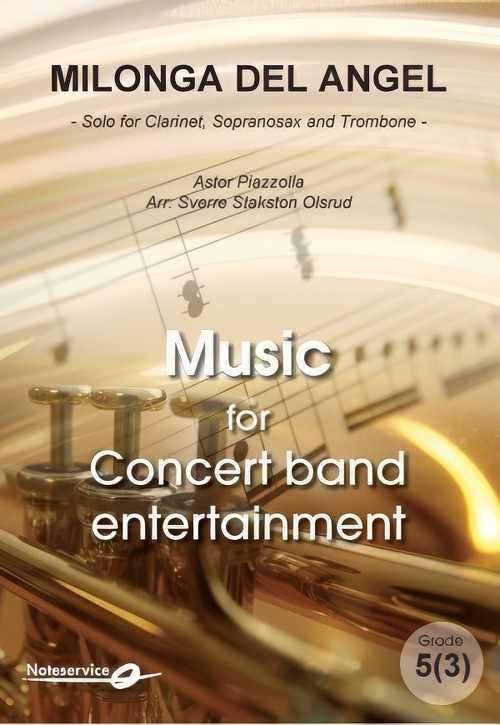 £98.00
£98.00Milonga del Angel (Clarinet, Soprano Saxophone and Trombone Trio with Concert Band - Score and Parts) - Piazzolla, Astor - Olsrud, Sverre Stakston
This arrangement was made after hearing Astor Piazzolla s 1986 recording of his own work written in 1965. The original instrumentation of bandoneon, violin and string bass is here arranged for three wind soloists with Concert Band. The Soprano Sax is the main soloist (filling the bandoneon role), while the trombone and clarinet shares the violin part as a kind of flirting undertone to the soprano saxophone. It s not possible to make a 100% correct notation of the solo parts, so it s recommended to listen to the record album Zero Hour from 1986 to get the best impression of the work. Enjoy Milonga Del Angel and imagine a small, dark cafe in Buenos Aires!
Estimated dispatch 7-14 working days
-
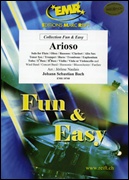 £89.60
£89.60ARIOSO (Flexible Solo with Easy Concert Band) - Bach, Johann Sebastian - Naulais, Jerome
Solo for Flute, Oboe, Basson, Clarinet, Alto Sax, Tenor Sax, Trumpet, Horn, Trombone, Euphonium, Tuba, Eb Bass, Violin, Viola or Cello. Duration: 4:45
Estimated dispatch 7-14 working days
